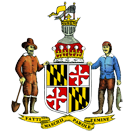| History of the Comptroller's Office (Nasim Moalem)
2001/05/17
Final version uploaded above
2001/03/05
Here is a very rough working draft on the history of the Comptroller's Office from 1925-1940
2001/28/02
Finished readings background info for the political arena of the time period. Used several different sources, including the ones given in class.
From Callcott, George H. Maryland Political Behavior. (Maryland Historical Society and Maryland State Archives: Annapolis, MD) 1986.
1920s Era of Governor Albert C. Ritchie; He is re-elected to the post 4 times, and makes 3 unsuccessful bids for the Presidency. Callcott says that "for the first time since the American Revolution, executive power in Maryland exceeded legislative power" (55). During his terms, he wins approval for a state civil service system and develops a tight executive budget for state operations. But as the Depression hits, Maryland's services to the poor decline.
1930s In 1934, Republican Harry W. Nice is elected. Many local and state officials are relunctant and skeptical of New Deal policies. They cut back on state funding of relief programs, but fight for their share of federal funds. Maryland also cuts back on its own program of workmen's comp. Callcott says that "Briefly, in the 1930s and 1940s , national planning eclipsed state and local planning" (56).
2001/02/25
Reread Wilner focusing on my specific dates of interest. Points of interest in the 1930s as they relate to BOW:
*1933 budget bill delegated new responsibility for BOW
*1935 the Depression hit Maryland hard--the state was close to insolvency, and was forced to borrow in anticipation of that year's tax revenues to meet debt payments
*the bill granted enormous power to the BOW by giving it supervision of all expenditures and reduce or eliminate the money to any department it deemed unnecessary. The Assembly also created two large emergency funds which would be in the control of the BOW. The Assembly also cut the salaries of state employees--the BOW was responsible with restoring those salaries.
** A new area of responsibility also arose as a result of the New Deal, especially in the form of matching grants for state and local facilities construction.
***The BOW also became responsible for Unemployment compensation, a new area because of the New Deal.
**The BOW became the 3rd most powerful unit of state government, next to the Assembly and the Governor.
**One area that Wilner claims where the BOW dropped the ball was its relunctance of coming to grips with the state's educational discrimination of blacks, even after the case of University v. Murray.
|
